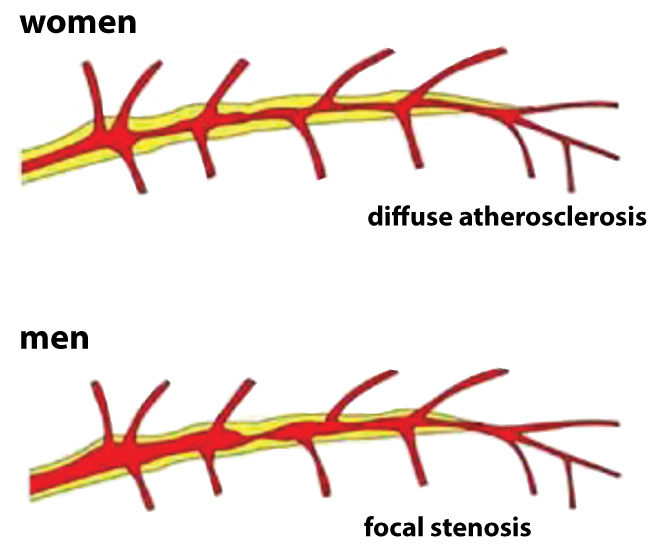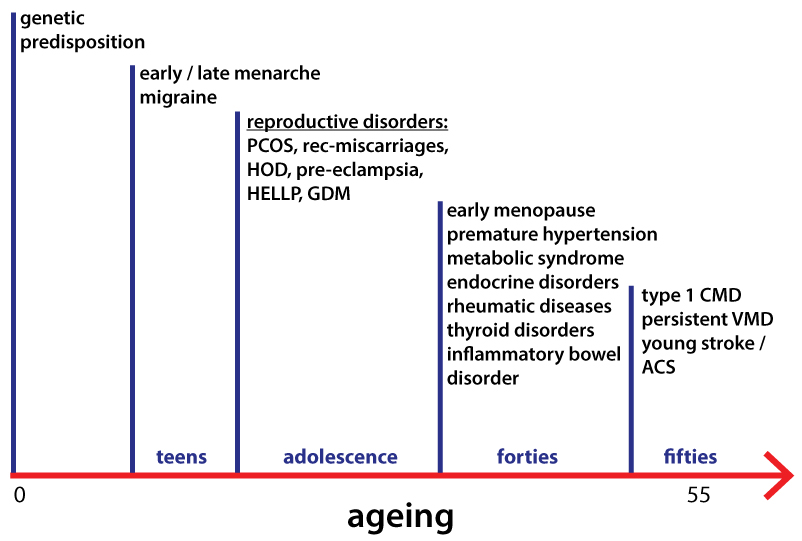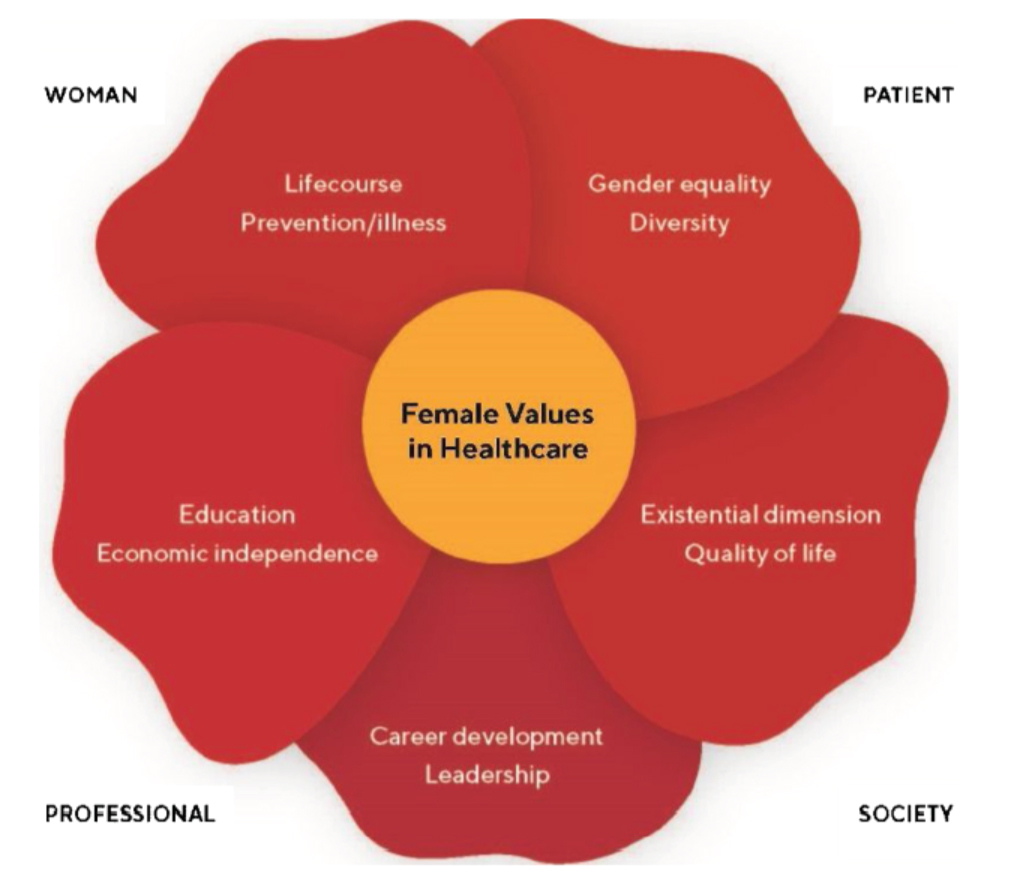The battle for equality in women’s heart health
10-Sep-2020
Healthcare in general has been developed along the male standard of the human body (Leonardo da Vinci) and women's health was merely related to diseases of the breasts and reproductive organs (the 'bikini approach'). This male-oriented vision is still present in almost all fields of healthcare, leading to many misunderstood diseases in women and the persistent misperception that unclear symptoms in women are related to 'psychosocial distress', says Professor Angela Maas, Cardiologist and Chair of Women's Cardiac Health Program in the Department of Cardiology at the Radboud University Medical Center, Nijmegen in the Netherlands.
Introduction
Almost 250 years ago, symptoms of chest pain were first described by William Heberden, an English Doctor, which he named angina pectoris. He found that these symptoms dominated in elderly men (over 50 years) and that they were rarely seen in women. At the time, he was possibly right, as life expectancy was much shorter than today and many women died at a young age, often after childbirth and long before diseases in the coronary arteries usually emerge.
Cardiology has developed as a medical specialism in the second half of the last century - for men and led by men. In many scientific studies, the participation of women was considered not to be relevant and this viewpoint persisted until the beginning of this century. In the sixties and seventies, women were even blamed for the heart attacks of their husbands. They may have been too demanding in asking for help with household issues, whereas men already had so many duties at work. In the US, training sessions were organised for women to behave in a more friendly way at home. At the time, women were considered to be at very low risk of heart disease, being ‘protected’ by their oestrogen hormones.
Paradigm shift in women's cardiac health
In 1991, the first landmark studies appeared in established medical journals, showing that women were less-well treated when having a heart attack in comparison to their male counterparts. It was suggested by Bernadine Healy, the Director of the National Institutes of Health (NIH), that female patients should behave more like a man to be taken seriously. She called this the 'Yentl-syndrome', named after the book by Isaac Bashevis Singer. The NIH was the first to take the initiative for more scientific healthcare research on a large scale in women in the fields of cardiovascular disease, osteoporosis and cancer.
Since then, we have learned that women are, in general, older and have more risk factors when having a heart attack and that many important sex-differences in the pathophysiology of atherosclerosis and other diseases of the heart truly exist. These biological differences translate into a different symptom presentation which is still frequently misunderstood in clinical practice. In addition, societal changes have an important impact on the manifestations of cardiovascular diseases. A large database in France recently showed a rise in hospitalisations for myocardial infarctions in women below 65 years of age and emerging data indicate that stress-related factors importantly contribute to this change. Socio-economic status, low education, poverty, sexual violence, loneliness etcetera are also crucial risk factors that affect women differently than men. Over the last decade, cardiovascular diseases in women have been the number-one killer worldwide. Despite this, the awareness of sex differences in cardiovascular disease among patients and healthcare providers is still insufficient.
Gendered innovations
In 2009 the platform 'gendered innovations' was launched by Professor Londa Schiebinger from Stanford University, aiming to implement 'sex' and 'gender' into to all aspects of science and environmental issues, with a primary goal to improve quality of life for everyone. This novel way of thinking has been adopted by the EC in the Horizon 2020 and upcoming scientific research programmes (www.genderedinnovations.eu - coming soon!). All EU grant applications need to incorporate gender-specific research questions and all research groups need to be gender-balanced. If they are not, an explanation is required in every application for funding.
#MeTooPatient
Since the arrival of internet and Social Media, medical information has become available for everyone. New knowledge spreads easily via the internet and often reaches patients earlier than their Doctors. This certainly accounts for women who are eager to know all the details of medical issues. Patients have become partners of their Doctors and they are often well informed and decisive about their own health problems.
Within cardiology, female patients do not accept vague diagnoses anymore and demand an explanation for their symptoms: we now live in the #MeTooPatient era. This demands that all Cardiologists, even those without any interest in sex and gender differences in heart disease, gain more knowledge about this topic. Patient organiations have turned out to be the best ambassadors for women's heart health. In addition, one of the leading medical journals, The Lancet, has installed a Lancet Women's commission to move women's health faster forward. This commission underscores that gender norms create pathways to better health outcomes and are the key to unlock the sustainable development challenge of health for all.

What makes a woman's heart so different?
The important sex differences in steroid hormones (oestrogen, testosterone) over our lifetime, have an important impact on our reproductive system, but also on every other metabolic and endocrine organ system, including the heart and blood vessels. Whereas men have stenoses in the coronary arteries more often and earlier in life, women have a more diffuse pattern of vascular ageing with spasm involved.
This leads to different symptoms in women, with fewer possibilities to perform a coronary intervention with balloon angioplasty or bypass surgery than in men. Women also have more variant types of myocardial infarctions, related to coronary spasm and coronary dissections (which is a sudden tear in a coronary artery). It is worrisome to note that over the last decades, the number of myocardial infarctions, especially in younger women (under 65 years), is rising. Even more, because mortality rates in younger women are twice as high, compared to those in similarly-aged men. Gender differences in the impact of mental stress on the cardiovascular system may be one of the reasons why these myocardial infarctions occur relatively more often in younger women. Psychosocial factors therefore demand more attention to prevention and rehabilitation programmes.
In women at middle age, recurrent symptoms of chest pain are also often related to coronary microvascular dysfunction. This is an ageing process in the smallest branches of the coronary tree. Microvascular dysfunction needs to be tested in the cathlab, but unfortunately only a few centres in Europe currently use this technique. Many Cardiologists still 'do not believe' in this diagnosis, whereas it was already discussed in the 2013 European Cardiology Guidelines. Microvascular angina therefore remains seriously under-diagnosed and under-treated. This has important societal and financial consequences, as many women are not able to do their job anymore. Treatment options are also still limited, because most cardiology medications have been developed for obstructive coronary disease and not for functional coronary abnormalities. The prognosis of persistent and recurrent symptoms of microvascular angina is not benign and comparable to the traditional pattern of obstructive coronary artery disease, as we see more often in men.
The ageing heart stiffens more in women than in men, frequently leading to heart failure with a stiffened heart at older ages (over 70 years). For this type of heart failure, no suitable medication has been developed yet and disabling symptoms are common in our elderly female population, affecting their quality of life to a great extent. Most research has been done for decades in heart failure patients with a reduced cardiac pumping function. This type of heart failure usually affects more men than women. Female patients have been less-well studied in this era. In a very recent publication, it was shown that women with this kind of heart failure are treated with higher medication dosages than they actually need. This is another indication that more, separate, sex-related research is needed in healthcare and that results found in men cannot be automatically extrapolated to the female population.
High-risk woman beyond traditional risk factors
We have learned over the past decades that patients are not 'gender neutral' and we should apply this knowledge in clinical practice and be more creative in using sex- and gender-specific characteristics to identify high-risk patients at a young age. In women, a history of (pre-menopausal) migraine, hypertensive pregnancy disorders (HPD), recurrent miscarriages, young age at menopause and inflammatory co-morbidities are all indications of a higher risk for premature cardiovascular disease, beyond the traditional risk factors (hypertension, dyslipidemia, diabetes) that dominate at older age. These risk variables are very helpful tools in clinical decision making in symptomatic women at middle age. We therefore need a more sex- and gender-sensitive way to look at the life-course of women and their cardiovascular health.

Moving forward with women’s (cardiac) health
A recent report from WHO states that, although over 70% of the health workforce is female, most women health workers are largely confined to positions with little power to change systems, organisations, or their careers, leading to work stress, job dissatisfaction, and burnout, which, in turn, can also result in poorer quality care of patients. Even when women become physicians, they are less likely than men to work in higher-paying specialties or be offered the same opportunities for professional advancement.
This type of discrimination has a cost in health outcomes, because a greater proportion of female physicians in the workforce has been linked to reduced maternal and infant mortality and better treatment of cardiac patients. Despite this evidence, analysis of the effect of gender norms on health systems remains neglected. Gender norms are perpetuated and challenged in families, communities, schools, workplaces, institutions, and the media. These expectations start early in life and powerfully shape individuals' attitudes, opportunities, experiences, and behaviors, with important health consequences throughout the life course. By improving leading positions for women in healthcare throughout the world, all themes connected with Women's Health will be put higher on the agenda and this will speed-up the realisation of the sustainable development goals (SDGs) 3 and 5 of the United Nations in 2030.

Conclusion
Cardiovascular diseases in women are still considered along the male standard. Women with cardiac symptoms are often misunderstood and not treated in accordance with our latest knowledge. A more sex- and gender-sensitive way of treating patients is needed in clinical practice. To move women's cardiac health faster forward, we need to empower patient ambassadors and create more leading positions for women working in healthcare.
Angela's book can be obtained from the usual sources, including: A woman's heart: why female heart health really matters

